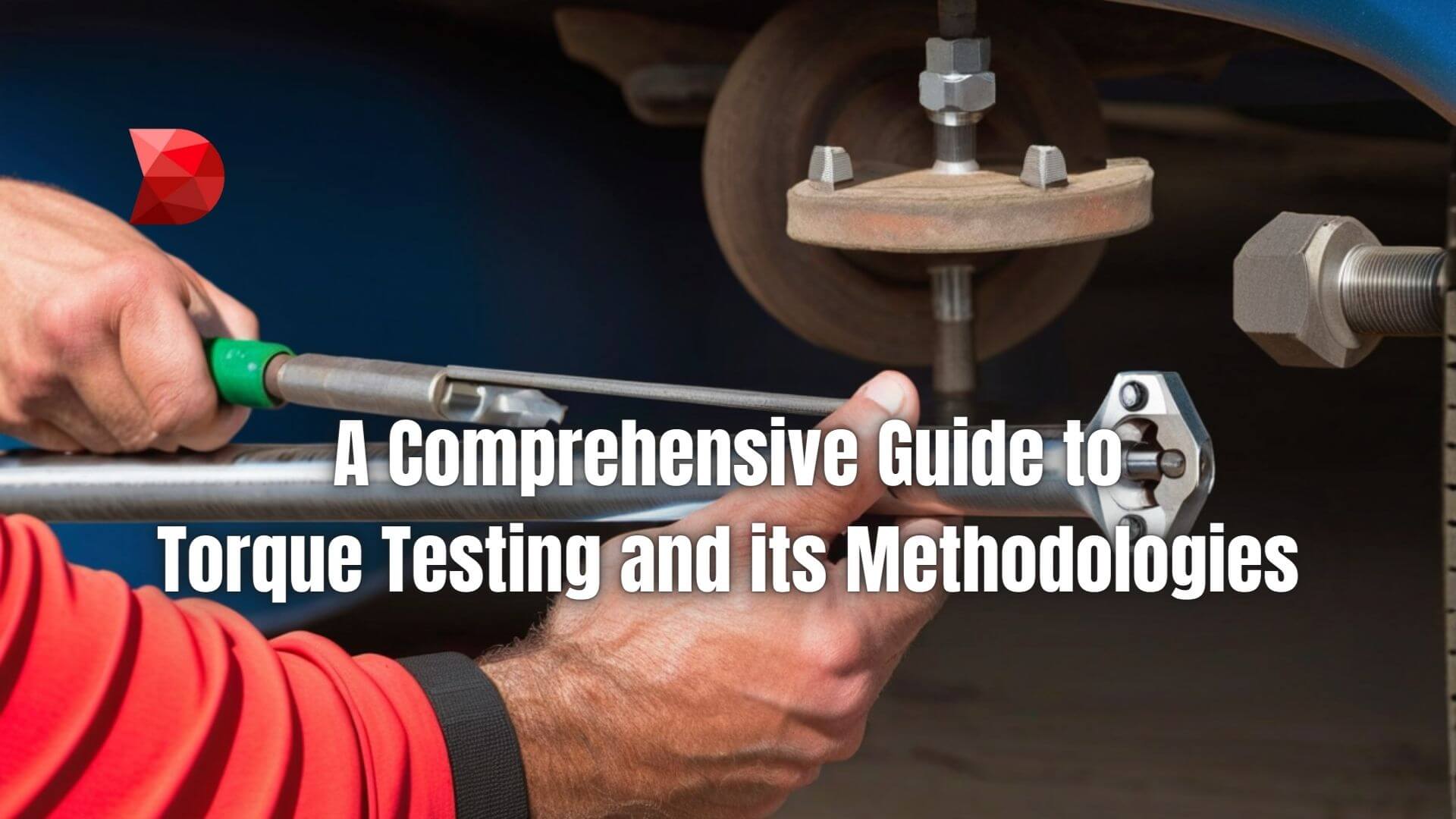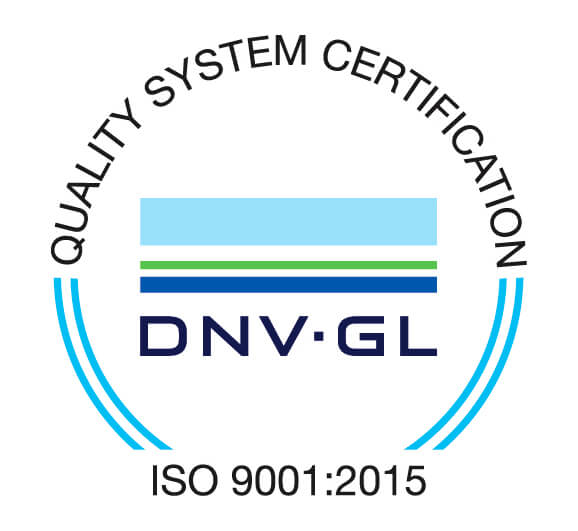In mechanical engineering, torque testing is a crucial procedure determining the amount of rotational force, or Torque, required to move an object around an axis. It’s akin to the exertion of force but in a rotational aspect.
Torque testing is indispensable in a wide spectrum of industries, including automotive, aerospace, manufacturing, and construction. The importance of torque testing lies in its ability to ensure the reliability and safety of various mechanical components, from the most basic nuts and bolts to sophisticated engine parts.
Methodical torque testing is vital as it ensures the proper functioning of these components by creating the necessary tension in threaded fasteners such as bolts. When the nut and bolt are tightened, it clamps two plates together, a process that heavily depends on the right amount of Torque.
This article will explore the intricacies of torque testing, its methodologies, and its significance in various industries.
Table of Contents
ToggleBasics of Torque Testing
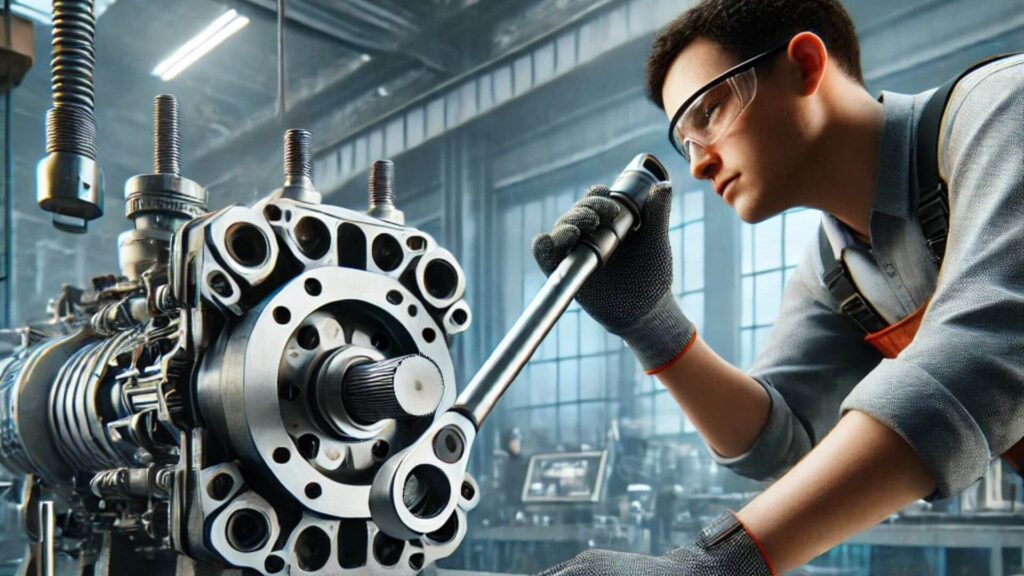
Torque, in simple terms, is the angular force that is needed to rotate an object around an axis. It is the rotational equivalent of linear force and a pivotal element in any mechanical rotating system.
Torque is measured in Newton meters (N.m) in the Imperial system’s metric system or foot-pounds (ft. lbs). The magnitude of the Torque depends on two factors: the force applied and the distance from the axis to the point of application of force.
Applications of Torque Testing
Torque testing finds broad applications across numerous industries, ensuring mechanical components’ operational efficiency and safety. With that said, here’s a quick overview of some of the areas where torque testing is imperative:
- Automotive Industry: In the automotive industry, torque testing is fundamental in guaranteeing the safety and efficiency of vehicles. It is primarily used to assess the performance of engines, transmissions, and brakes. By ensuring that all fasteners and components are precisely tightened, proper torque testing helps to avoid premature wear or failure.
- Manufacturing Processes: Torque testing also plays a critical role in manufacturing processes. In assembly lines, for instance, ensuring that all components are tightened to the correct Torque is crucial, minimizing the risk of product failure. Accurate torque testing helps maintain consistent quality in products and reduce manufacturing defects.
- Quality Control: Finally, torque testing is an invaluable tool for quality control. It confirms that components, devices, or equipment meet specified torque requirements. This ensures that products leaving the factory floor are safe, reliable, and meet the expected performance standards. Over or under-tightening prevention can significantly reduce the risk of liability and product recalls, bolstering a company’s overall reputation.
Key Components of Torque Testing
In the execution of torque testing, a deep understanding of its key components helps in achieving accurate and reliable results. Two principal aspects form the backbone of torque testing: the equipment used and the factors that affect the results. A comprehensive grasp of these elements promotes precision in testing, thus ensuring superior performance and safety of mechanical components.
Torque Testing Equipment
The equipment used in torque testing is crucial to the results’ accuracy and the testing process’s overall efficiency. This includes devices such as the following:
- Torque Wrenches: These tools apply a specific amount of Torque to a fastener such as a nut or bolt. They are crucial in torque testing as they help in the precise application of Torque, thus ensuring accurate results.
- Torque Sensors: These sensors measure and record the amount of Torque on a rotating system, such as an engine, axle, or gearbox. They are integral to torque testing, providing accurate, real-time Torque measurements.
- Torque Meters: These devices measure the Torque produced by motors, engines, and other rotating objects. They are essential in torque testing as they help evaluate these objects’ performance.
Factors Affecting Torque Test Results
Several factors can significantly influence the results of torque testing, making it necessary to understand and control these variables to ensure accurate and consistent outcomes. These factors include the following:
- Environmental Conditions: The external environment can greatly affect the results of torque testing. Temperature and atmospheric pressure changes can impact the results, making it essential to control these variables for accurate testing.
- Lubrication: The presence and type of lubrication can significantly affect the torque-tension relationship. It’s essential to ensure proper lubrication to achieve accurate torque testing results.
- Material Properties: The properties of the materials used in fasteners, such as their strength and thermal expansion characteristics, can influence torque test results. Understanding these properties can help in predicting how these materials might behave under different conditions, thus aiding in precise torque testing.
- Human Error: Finally, human error can also impact torque testing results. Proper training and adherence to testing protocols are crucial in minimizing the potential for error during torque testing.
Methodologies of Torque Testing
Several methodologies are employed in torque testing to ensure accurate and efficient results. These methodologies vary in their application, procedures, and the types of Torque they measure. They include Static Torque Testing, Dynamic Torque Testing, and Non-Destructive Torque Testing.
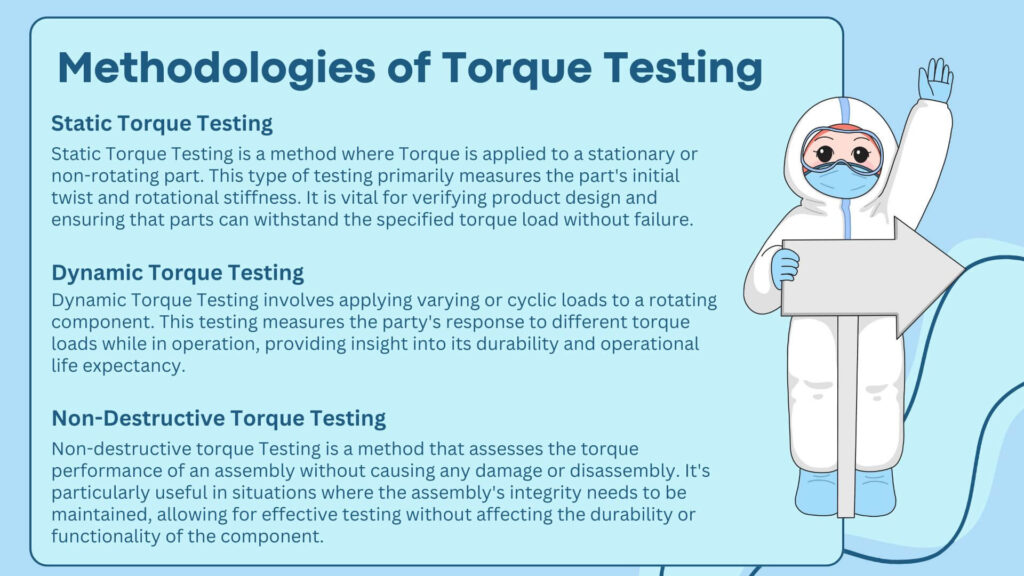
Static Torque Testing
Static Torque Testing is a method where Torque is applied to a stationary or non-rotating part. This type of testing primarily measures the part’s initial twist and rotational stiffness. It is vital for verifying product design and ensuring that parts can withstand the specified torque load without failure.
In Static Torque Testing, the component under test is secured to prevent rotation. A torque wrench or a similar device is applied to a specified torque load. The resulting deformation or ‘twist’ is measured and compared against predefined standards to assess the part’s performance under load.
Dynamic Torque Testing
Dynamic Torque Testing involves applying varying or cyclic loads to a rotating component. This testing measures the party’s response to different torque loads while in operation, providing insight into its durability and operational life expectancy.
Dynamic Torque Testing requires the component to be connected to a torque sensor and a rotating driver or load. As the part operates and cycles through different torque loads, the sensor measures the changes in Torque. The collected data is then used to evaluate the component’s dynamic performance and lifespan.
Non-Destructive Torque Testing
Non-destructive torque Testing is a method that assesses the torque performance of an assembly without causing any damage or disassembly. It’s particularly useful in situations where the assembly’s integrity needs to be maintained, allowing for effective testing without affecting the durability or functionality of the component.
- Ultrasonic Torque Measurement: Ultrasonic Torque Measurement is a non-destructive method that uses ultrasonic waves to measure the Torque applied to a fastener. This method provides a highly accurate measure of Torque without physically altering or damaging the component.
- Magnetic Particle Torque Testing: Magnetic Particle Torque Testing is another non-destructive technique that uses magnetic fields to detect discontinuities or changes in a component’s surface when exposed to Torque. This method is particularly useful for identifying surface and subsurface defects affecting the part’s capacity to handle torque loads.
Importance of Calibration in Torque Testing
Calibration, in the context of torque testing, refers to verifying and adjusting the accuracy of torque testing devices using a standard of known correctness. Calibration aims to ensure that torque readings are precise and reliable, guaranteeing the test results’ integrity. Confidence in the accuracy of these measurements is pivotal in maintaining the quality of products and safeguarding operational safety and efficiency.
Calibration Procedures for Torque Testing Equipment
There are several essential calibration procedures that must be undertaken to ensure the accuracy of torque testing equipment. These procedures typically include:
- Pre-Calibration Check: This involves visually inspecting the equipment to ensure it is in good condition and that no visible defects may influence the calibration results.
- Zero Adjustment: This process ensures that the torque testing device reads zero when no load is applied.
- Intermediate Point Checks: This entails checking and adjusting the device’s accuracy at several points within its measurement range.
- Full-Scale Check: This process involves testing the device’s maximum measurement capacity to ensure full-scale accuracy.
- Post-Calibration Data Collection: After calibration, data is collected and compared to pre-calibration data to document the adjustments made and their effects on the device’s performance.
Frequency of Calibration for Torque Testing Equipment
The calibration frequency for torque testing equipment should be determined by the level of usage and the standards of accuracy required by your industry or organization. Here’s a general guide:
- High Usage Equipment: Equipment that is used frequently should ideally be calibrated every three to six months. Regular calibration ensures accurate and reliable performance, reducing the risk of errors or discrepancies.
- Standard Usage Equipment: Annual calibration is typically sufficient for equipment with standard usage. This helps maintain the accuracy and precision of measurements, ensuring consistent results throughout the year.
- Infrequent Usage Equipment: If your equipment is used infrequently, calibrating it once every two years may be adequate. Although less frequent, calibration is still necessary to verify the equipment’s accuracy and reliability, even with less frequent use.
- Post-Repair Calibration: Any time equipment has been repaired or altered, it should be recalibrated before use. This is crucial to ensure that the repairs or alterations have not affected the accuracy or functionality of the equipment.
- Industry Standards: Some industries may have specific guidelines or regulations regarding calibration frequency. Adhering to these standards is essential to ensure compliance and accuracy of test results and meet the requirements set by regulatory bodies.
Remember, these are general guidelines, and the specific needs of your operations may call for more frequent calibration.
Common Challenges in Torque Testing
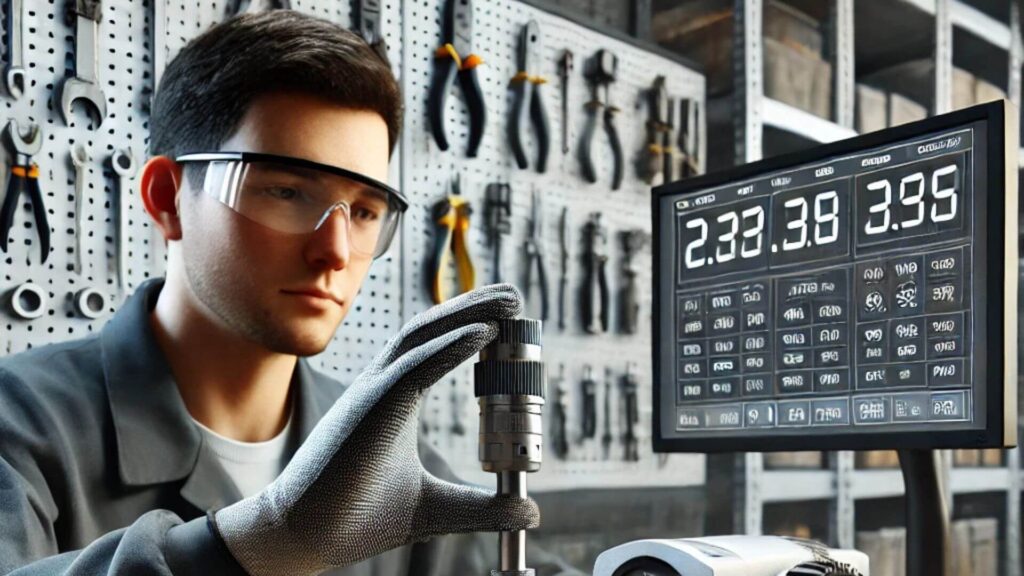
Torque testing, while crucial to ensuring the efficiency and safety of equipment, is not without its challenges. These hurdles range from human errors to equipment limitations and complexities in interpreting test results.
Human Errors in Torque Testing
Human errors can significantly impact the accuracy and reliability of torque test results. These could stem from a lack of proper training, misunderstanding of the testing procedures, or even simple oversights during the testing process.
Errors might include incorrect setup of the testing device, improper application of force during testing, or failure to calibrate equipment regularly. These mistakes can lead to inaccurate measurements, potentially jeopardizing the safety and functionality of the tested components.
Equipment Limitations in Torque Testing
Even with impeccable operation, the limitations inherent to the testing equipment can pose challenges in torque testing. For instance, certain devices might be unable to test at extremely high or low torque values, limiting their application range.
Additionally, the accuracy and precision of the equipment can be influenced by various factors such as environmental conditions, wear and tear, or even power supply variations. Equipment limitations can potentially lead to erroneous results, impacting the integrity of the testing process.
Challenges in Interpreting Torque Test Results
Interpreting torque test results accurately is crucial but can often be complex due to numerous factors. Results can be influenced by material properties, temperature, and rate of torque application, all of which need to be taken into account when analyzing the data.
Misinterpreting test results can lead to incorrect conclusions and decisions, such as inappropriate adjustments to the assembly process or unnecessary part replacements. Therefore, thorough understanding and experience are key to accurately interpreting torque test results.
Best Practices for Effective Torque Testing
Certain best practices can be employed to overcome the challenges in torque testing and ensure the highest accuracy and efficiency. These involve proper training for personnel, regular maintenance of torque testing equipment, and thorough documentation and record-keeping. Implementing these practices reduces errors and optimizes the testing equipment’s overall performance and lifespan.
Proper Training for Personnel
Proper training for personnel involved in torque testing plays a pivotal role in minimizing human errors. This training should ideally cover the following aspects:
- Understanding of Torque Concepts: Staff should have a thorough understanding of the basic concepts of Torque, tension, clamping force, and how they are interrelated.
- Operation of Torque Testing Equipment: Comprehensive training on the correct operation of the torque testing device is essential to ensure accurate test results.
- Calibration Procedures: Personnel should be well-versed in the calibration procedures of the torque testing equipment to maintain its accuracy and reliability.
- Interpretation of Test Results: Staff should be trained to interpret test results accurately, considering the various influencing factors.
Regular Maintenance of Torque Testing Equipment
Regular maintenance of torque testing equipment is integral to its longevity and accuracy. The following maintenance practices are recommended:
- Routine Cleaning: Regular cleaning of the device can prevent the accumulation of dust and dirt, which can affect the device’s performance.
- Inspection for Wear and Tear: Regular reviews can help identify and address wear and tear before it affects the accuracy of the testing device.
- Replacement of Worn Components: Worn components should be replaced promptly to prevent inaccurate readings.
- Ensuring Proper Power Supply: Variations in power supply can affect the device’s performance, so it is essential to ensure a consistent power source.
Documentation and Record-Keeping
Thorough documentation and record-keeping are crucial for tracking the performance of the testing equipment over time. This should include:
- Calibration Records: Keeping a record of all calibrations, including the date, adjustments made, and post-calibration performance, can help identify patterns or recurring issues.
- Maintenance Logs: A log of all maintenance activities, including cleaning, inspections, and replacements, can be beneficial in planning future maintenance.
- Test Results: All test results should be documented with relevant details like the date, operator, and conditions under which the test was conducted.
- Training Records: Keeping a record of all training activities can ensure that all personnel are up-to-date with the latest procedures and protocols.
Torque Testing Standards and Regulations
Compliance with international standards and industry regulations is indispensable to torque testing. Adherence to these standards ensures consistent quality, safety, and reliability of the tested products while also serving as a benchmark for comparison across different manufacturers.
International Standards for Torque Testing
There are several internationally recognized standards for torque testing, each focusing on specific aspects and applications. Here are some noteworthy ones:
- ISO 6789-1:2017 – Assembly tools for screws and bolts— Hand torque tools: This standard outlines the requirements for the design and testing of manually operated torque tools used in tightening or loosening fasteners.
- ISO 6789-2:2017 – Assembly tools for screws and bolts— Hand torque tools: This part of ISO 6789:2017 specifies the requirements for calibration and determination of measurement uncertainty of manual torque tools.
- ASTM F606/F606M – Standard Test Methods for Determining the Mechanical Properties of Externally and Internally Threaded Fasteners, Washers, and Direct Tension Indicators: This ASTM standard outlines the methods for testing the mechanical properties of fasteners, including torque testing.
- BS EN 26789:1993 – Assembly tools for screws and bolts— Square drive sockets, hand and machine-operated: This British Standard specifies the characteristics of square drive sockets intended for use with hand-operated and machine-operated torque tools.
Compliance with Industry Regulations
Compliance with industry regulations is pivotal to ensure the safety and reliability of the products. Regulations vary across industries but often include regular calibration of torque testing equipment, adherence to specific testing protocols, documentation and record-keeping, and employee training.
Compliance helps maintain a high-quality standard, reduces the risk of product failure, and builds customer trust. Non-compliance can lead to penalties, product recalls, and damage to the company reputation. Therefore, understanding and following industry-specific regulations is fundamental to torque testing.
Frequently Asked Questions (FAQs)
Q1: What is the significance of torque testing in the manufacturing sector?
Torque testing plays a crucial role in the manufacturing sector since it ensures product quality, safety, and reliability. Providing precise measurements of the Torque required to either tighten or loosen a fastener helps ascertain that assemblies are built within the defined specifications. This is vital for the product’s performance and safety, significantly reducing the risk of failure or malfunction.
Q2: Does temperature affect torque testing results?
Yes, temperature can significantly impact torque testing results. Temperature variations can cause changes in material properties, potentially altering the friction between the threads of a fastener. Consequently, both the torque-tension and torque-clamp force relationships might be affected. Therefore, torque tests should ideally be conducted under controlled temperature conditions.
Q3: Can the same torque testing method be used for all types of products?
Not necessarily. The choice of torque testing method can depend on various factors, including the type of product, its application, and the industry standards or regulations to be followed. Different products may have different torque requirements, so the testing method must be chosen accordingly. Furthermore, industry-specific regulations may dictate a particular testing method or protocol.
Measure Torque with DATAMYTE
DATAMYTE, a recognized industry leader in providing robust data collection and low-code quality management solutions, offers a range of torque products designed to enhance accuracy and efficiency in various manufacturing environments.
LightStar™ Torque Wrench
This precise torque-measuring instrument is designed to eliminate false readings that are difficult to detect. The LightStar™ Torque Wrench series technology sensor ensures that the operator can pull at any point on the wrench and will receive an accurate measurement.
DataMyte Torque Solution
This solution provides real-time reporting and torque data collection to improve and monitor Torque continuously. It’s a comprehensive system for managing all aspects of torque control, from data collection to analysis and reporting.
New Generation of Digital Torque Wrenches
DATAMYTE has introduced a new generation of their LightStar™ Carbon Fiber Torque Wrench. These digital torque wrenches offer improved performance and accuracy, making them ideal for demanding industrial applications.
These products are part of DATAMYTE’s commitment to providing quality management solutions that enhance actionable results based on collected production data. They are designed to ensure consistent, reliable torque application, improving the quality and reliability of assembled products. Book a demo with us now to see how we can help you achieve your torque accuracy goals.
Conclusion
Torque testing is a vital aspect of many manufacturing processes, enabling the accurate application of force and ensuring assembled products’ safety, reliability, and quality. Key international standards guide these testing practices, and industry-specific regulations help maintain a high-quality standard.
As we look towards the future, we anticipate even more advanced methodologies in torque testing. Technology will continue to evolve, bringing forth innovations that enhance accuracy, efficiency, and ease of use. These advancements will likely include more automated, intelligent systems that provide real-time data and insights.
The importance of implementing effective torque testing practices cannot be overemphasized. These practices uphold product integrity and safeguard companies against potential liabilities associated with product failures.
Therefore, it is incumbent upon all industry players to invest in robust torque testing methods and stay abreast with the latest developments in this field. By doing so, we can collectively ensure the continued production of safe, durable, and high-quality products that meet the exacting demands of consumers worldwide.

